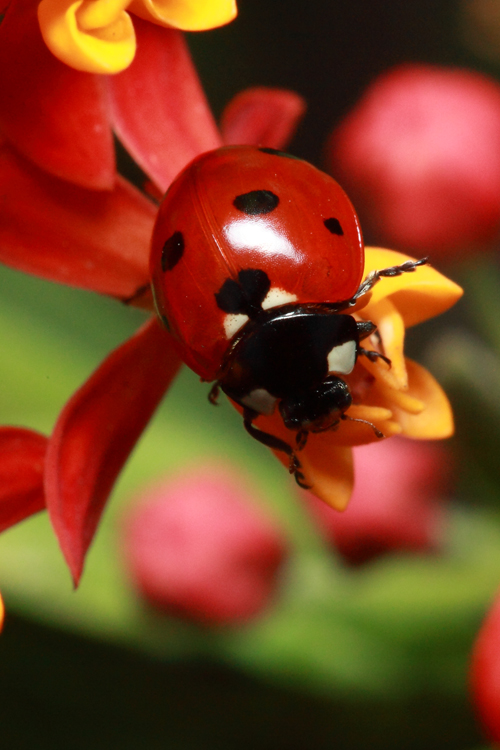
The seven-spot lady beetle is the most common lady beetle in Europe. After repeated introductions to the U.S. it can now be found in backyards throughout the U.S. Photo by M. Merchant.
Certainly one of the most beloved of all insects is the ladybug, or more correctly, lady beetle. And a new citizen science web project may be just the thing for adults and kids with an interest in lady beetles or cameras or both.
The Lost Ladybug project started because of concerns about dwindling numbers of one kind of lady beetle, the nine-spotted lady beetle, in New York state. It appears to have evolved into a bigger project where people from any part of the country can participate. Find a lady beetle? Photograph it and document the site, time and date of picture. Then upload the information and contribute to science!
What a great way to have fun and do something worthwhile. In addition to recording your observation, visitors can view and print posters of different kinds of lady beetles, read interesting lady beetle facts and (teachers) can download lady beetle lesson plans. Scientists will benefit from the photographic record, which should allow more up-to-date range records for common and rare species. Perhaps most important, over time the project may allow scientists to document changes in range or distribution or abundance of different species. The scientists are especially interested in rare lady beetles in out of the way locations, like state parks or little trodden trails. But any site will do. The thing is, you never know what’s going to happen when thousands of people are looking and clicking.
For anyone who thought a lady beetle is just a lady beetle, think again. There are over 450 different species of lady beetles in North America, over 5,000 worldwide. They come in all sizes and color patterns, feeding mostly on aphids and scale insects–two important pests for farmers and gardeners.
Lady beetles are true beetles in the Order Coleoptera, not “bugs” in the Order Hemiptera. Beetles have chewing mouth parts, go through a complete metamorphosis, and have the first pair of wings hardened to protect the body and the hind wings. Bugs have sucking mouth parts, go through gradual metamorphosis, and have the first pair of wing partly hard and part transparent.
Nevertheless, despite the science, the name ladybug is likely to persist. After all,
Lady beetle, Lady beetle… Fly away home!
…it just doesn’t have the same ring.